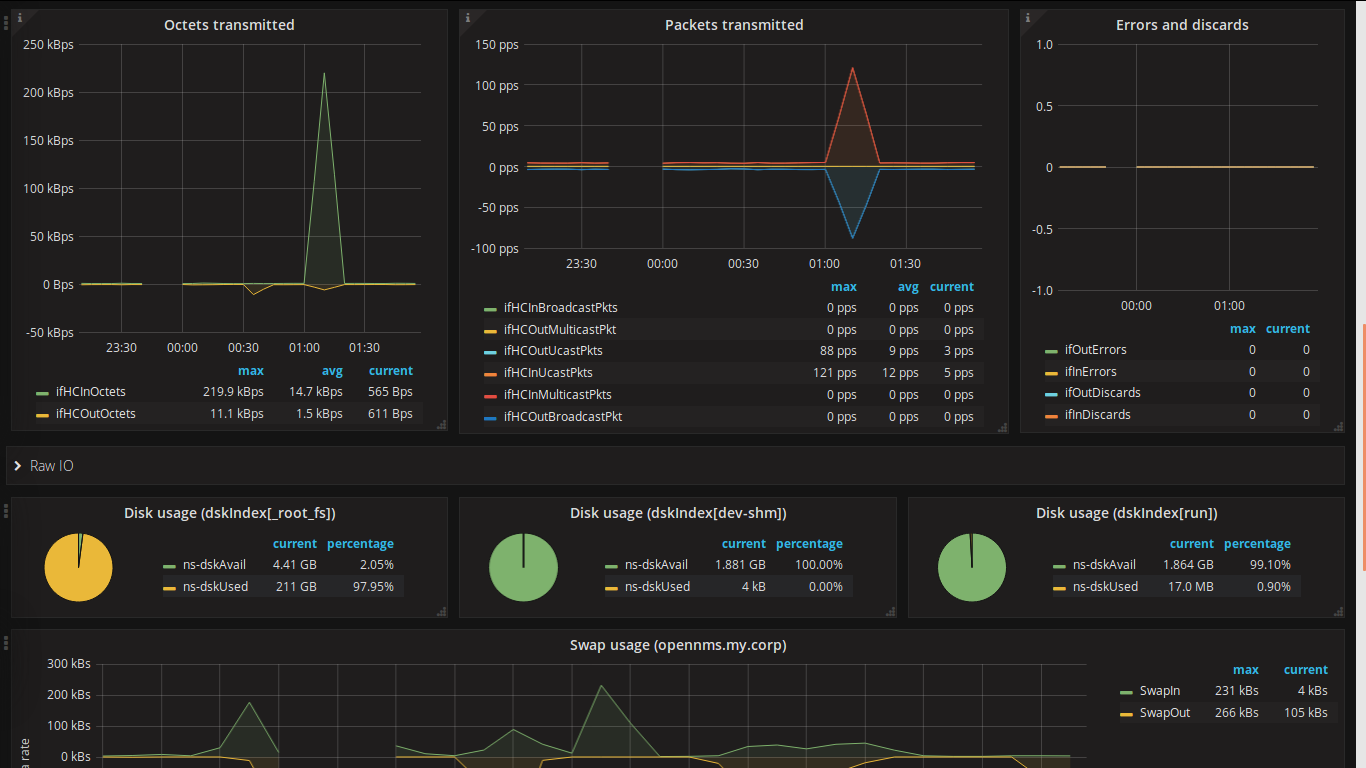What is HELM?
HELM is an application that lets users create flexible dashboards to interact with data stored by OpenNMS. HELM works with Grafana, an analytics platform, to display and customize fault management (FM) and performance management (PM) data from OpenNMS Horizon and OpenNMS Meridian. Create and customize dashboards to display the data you want to see—alarms, outages, key performance indicators—in a way that best meets your organization’s needs.

How does it work?
HELM includes datasources for retrieving both FM and PM data from an existing OpenNMS deployment as well as specialized panels to display and interact with the faults. The ability to aggregate data from multiple instances of OpenNMS lets operators build a single pane of glass from distributed deployments.
All interactions with OpenNMS are done via the REST API. No FM or PM data is stored within HELM or Grafana.
Fault management
Fault management (FM) is the process of identifying problems (or faults) related to network devices and systems, and managing their lifecycle. OpenNMS uses a combination of events, outages, alarms, and notifications to do this.
HELM supports filtering, retrieving, displaying, and performing actions against alarms in OpenNMS.
|
Not familiar with alarms in OpenNMS? Check out this OpenNMS 101 video on YouTube: OpenNMS 101 - Module 5: Alarms. |
Performance management
Performance management (PM) is the process of gathering, storing, and analyzing system health using a series of metrics or key performance indicators (KPIs). These metrics can be used for historical analysis or to automatically generate faults when certain conditions or thresholds are met.
HELM can retrieve and visualize metric data (measurements) that OpenNMS stores.
|
Not familiar with data collection and storage in OpenNMS? Check out this OpenNMS 101 video on YouTube: OpenNMS 101 - Module 11: Data Collection. |